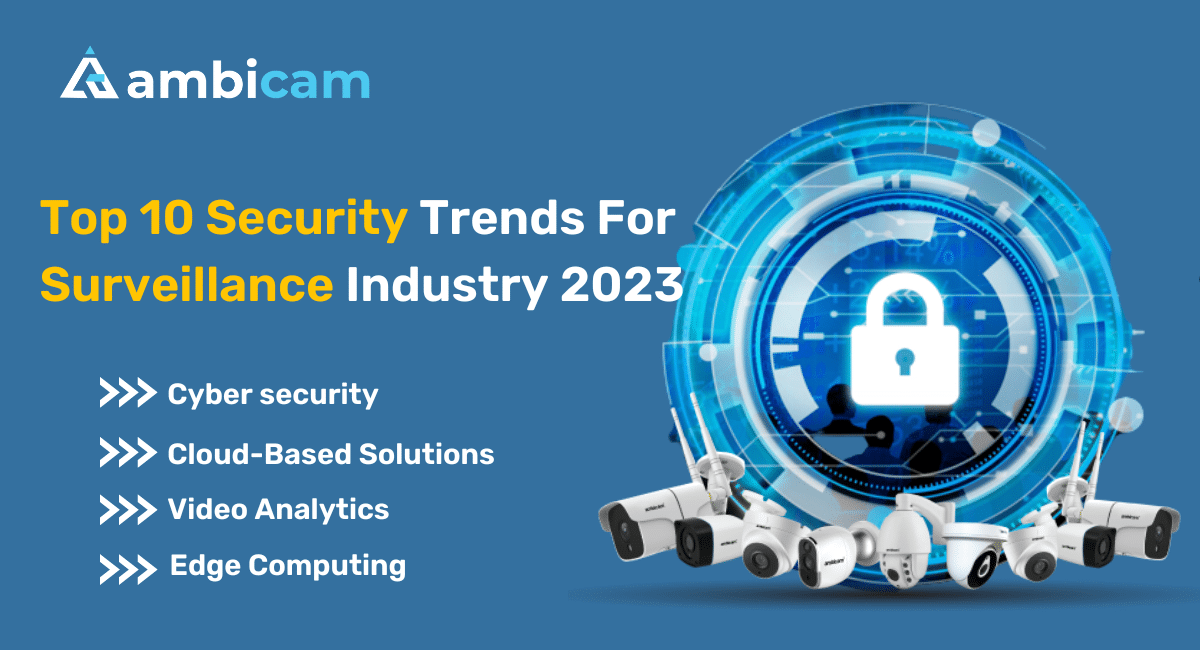The surveillance industry is constantly evolving and changing, with new technologies emerging every year. As we look forward to 2023, we can expect to see some exciting new Security Trends for Surveillance that will shape the industry. In this blog post, we’ll explore the top 10 security trends that are expected to take hold in the surveillance industry. Read on to learn more!
Introduction:
The surveillance industry is rapidly evolving with new technologies and solutions being developed every day. As such, the security trends for this sector must be constantly updated to keep up with such changes. One of the top security trends for the surveillance industry in 2023 is the increased use of artificial intelligence (AI) and machine learning (ML) tools to detect anomalies and intrusions.
AI-powered analytics can quickly identify patterns that would otherwise be difficult to detect in real time. Another trend is the deployment of cloud-based security solutions which enable efficient storage and access to data while simultaneously providing a secure platform for surveillance operations.
Additionally, biometrics are being more widely deployed as a means of authentication and access control, offering greater protection against unauthorized access. Moreover, facial recognition is becoming increasingly accurate and reliable in identifying individuals while also enabling an automated response system where appropriate.
Also, blockchain technology is being used to ensure secure data transmission as well as improve the transparency of surveillance activities by providing a transparent audit trail. There are many trends that will prove invaluable in improving the overall security of the surveillance industry in 2023 and beyond.
Introduction to the Surveillance Industry Trends of 2023
As an AI language model, I cannot predict the future but based on current Security Trends for Surveillance and emerging technologies, here are ten potential security trends for the surveillance industry in 2023
1. Artificial Intelligence (AI) and Machine Learning (ML) Integration: The use of AI and ML will continue to grow in the surveillance industry, allowing for more accurate and efficient identification and analysis of security threats. With AI and ML, surveillance systems will be able to detect unusual behavior patterns and provide real-time alerts, reducing response times and preventing potential security breaches.
2. 5G Connectivity: With the rise of 5G networks, surveillance systems will become more efficient and faster, allowing for real-time monitoring and faster response times. 5G connectivity will also enable the use of more advanced surveillance technologies such as facial recognition and object detection.
3. Cyber Security: As surveillance systems become more connected and integrated, cyber security will become even more critical. In 2023, the focus on cybersecurity for surveillance systems will increase, with more advanced encryption methods, regular security audits, and training programs for employees.
4. Cloud-Based Solutions: Cloud-based solutions will become increasingly popular for storing and analyzing surveillance data. Cloud-based solutions will provide greater flexibility and scalability for surveillance systems, making it easier to manage and analyze data from multiple sources.
5. Privacy Concerns: As the use of surveillance systems grows, so will concern around privacy. In 2023, there will likely be increased scrutiny around the use of facial recognition technology and other biometric data collection methods. As a result, there may be more regulations around the use of these technologies to ensure that personal privacy is protected.
6. Video Analytics: Video analytics will become more advanced and widespread, allowing for more accurate and efficient analysis of surveillance footage. Video analytics will be used for a wide range of applications, including crowd control, traffic management, and retail analytics.
7. Internet of Things (IoT) Integration: IoT integration will become more common in surveillance systems, allowing for greater automation and control. IoT devices will be used to monitor and control cameras, sensors, and other surveillance equipment, providing real-time feedback and alerts.
8. Mobile Access: Mobile access to surveillance systems will become more common, allowing for greater flexibility and mobility. Mobile apps will be used to access and control surveillance systems remotely, providing real-time alerts and notifications.
9. Blockchain Technology: Blockchain technology will be used to enhance the security and reliability of surveillance systems. Blockchain technology will be used to secure data and prevent unauthorized access, ensuring that surveillance data remains tamper-proof and secure.
10. Edge Computing: Edge computing will become more popular in surveillance systems, allowing for faster and more efficient processing of data. Edge computing will be used to analyze surveillance data in real time, providing faster response times and reducing the load on central processing systems.
Read this also: 5 Top CCTV Surveillance Technology Trends Shaping the Security
To Conclude:
In conclusion, the key takeaways for security trends in the surveillance industry in 2023 are improved physical security options such as access control, biometric authentication, and proactive monitoring; better use of cloud-based storage and analytics; greater focus on data privacy and risk mitigation; increased investment in AI-based security solutions; and more emphasis on secure communications.
These trends are essential for the industry to remain competitive and keep up with the rapid advances in technology. For data privacy and risk mitigation, organizations must ensure they are aware of how their data is used, stored, and processed. Investment in AI-based security solutions is also necessary to identify potential threats as well as quickly respond to any malicious activity. Finally, secure communication should be prioritized to maintain secure connections between stakeholders and sensitive information.
As the surveillance industry continues to evolve, it is important to keep up with changes and Security Trends for Surveillance in order to stay ahead of the curve. The ten security trends discussed in this blog post are just a few of the many that will affect the surveillance industry in 2023. By making sure that your security measures are up to date-and compatible with the latest technologies, you can ensure the safety and security of yourself, your clients, and your employees.

